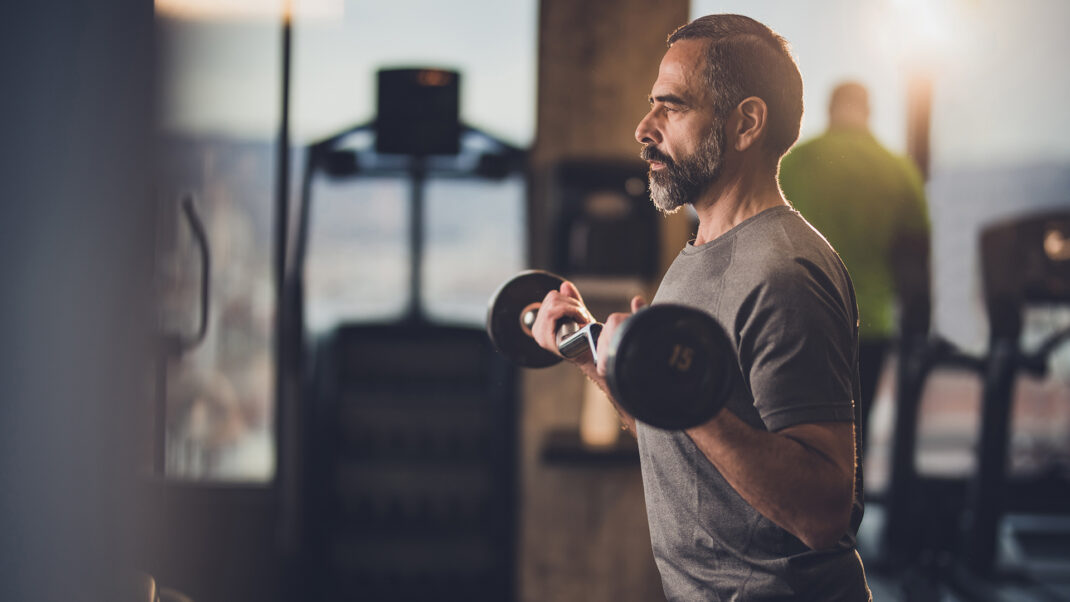No-Neck-Pain Abs
Modify moves so participants can develop a strong center without encountering neck pain.

How often do you hear participants complain about neck pain when you teach core moves in your classes? For many people dealing with ongoing neck-positioning issues, this is a real struggle. No matter how effectively the head is supported, they still have issues with neck stress for various reasons, including lack of strength, natural biomechanics or previous injury. These constraints prevent some participants from getting the most from your core/abdominal workouts and may inadvertently limit overall core strength. However, you can support these participants by offering the right moves. Try the following ideas in your next class.
Changing Positions
Instead of doing abdominal moves with the back flat on the floor, try a seated position, still on the floor, shoulders pressed behind the hips:
- Do slight posterior tilt to immediately engage abs.
- Lean back until abs are challenged; keep head in neutral alignment
with spine. - Increase positional support by placing small sponge ball at base of back, against buttocks and sacrum, for added stability.
- Once positioned correctly, “close” rib cage, contract abs, and do smaller but more intense compressions.
- Don’t lean back too far, arch the back or add pressure on neck by making movements too large.
Apply the above to moves on a stability ball, as well:
- Seated toward front of ball, with back of hips and rear end pressing against it, tilt hips up slightly to engage abs. Holding the head will not be necessary.
- Use different arm placements to increase intensity and complexity. In addition to working in traditional positions (e.g., with hands behind ears or across chest), extend arms straight out from shoulders, or point one arm to ceiling and other arm to floor. Cover all approaches to the muscle group—front, side and diagonal.
Negative Leg Drop
Another effective way to train the core and abs is to focus on negative work, with hips elevated on a foam roller or flat on the floor. It’s important not to arch the back or feel any lower-back strain while doing these exercises:
- Lie down and place foam roller beneath hips. Head stays on floor.
- Keep upper body firmly planted on ground. Engage abs throughout the movement.
- Start with legs directly over hips and lower slowly toward ground, without allowing rib cage to expand.
- Vary leg positioning to challenge entire area. For example, lower legs together on way down, and spread them wide, doing half circles, on return.
- Lower legs on slight diagonal to engage obliques.
Another option is doing 90/90s. This approach challenges the entire core. Modify by slightly bending knees to reduce lever length:
- Start with legs directly over hips, then drop both legs to one side so that hip angle is 90 degrees; tap down, and engage abs to lift legs back over hips.
- Repeat on other side.
- Do these moves slowly to strengthen the back. Try not to push off floor or use arms; utilize all core muscles to move legs and weight from side to side.
Incline Plank
Plank is a popular exercise, but it can cause neck stress. When fatigue sets in, participants often lead with the chin or drop the head. In the high-, low- or side-plank position, it’s essential to keep the spine in alignment (no arching the back) and maintain proper head placement. One easy fix is to do planks on an incline (any elevated surface). The elevation provides enough angle change that gravity has less force to adversely affect positioning. Intensify the work with one of these (or other) variations:
- Lift one leg.
- Rotate one leg in a big circle.
- Tap one foot away from body.
- Pull knee across center to opposite shoulder.
Aileen Sheron
One of three finalists for IDEA’s 2020 and 2021 Fitness Instructor of the Year award, Aileen is an entrepreneur and innovator across most facets of the fitness industry. She is an international presenter, inventor, program developer, content creator, writer, business owner, and social media personality. A continuing education provider for decades, she has trained thousands of instructors. She has been a mentor and life coach to many of today’s industry leaders and provides proprietary choreography to align with their personal brands. Aileen is also president of Good Natured Products, Inc., makers of her invention, the Omniball, and other fitness products. You can find her at www.aileensheron.com. Certifications: ACE and AFAA






